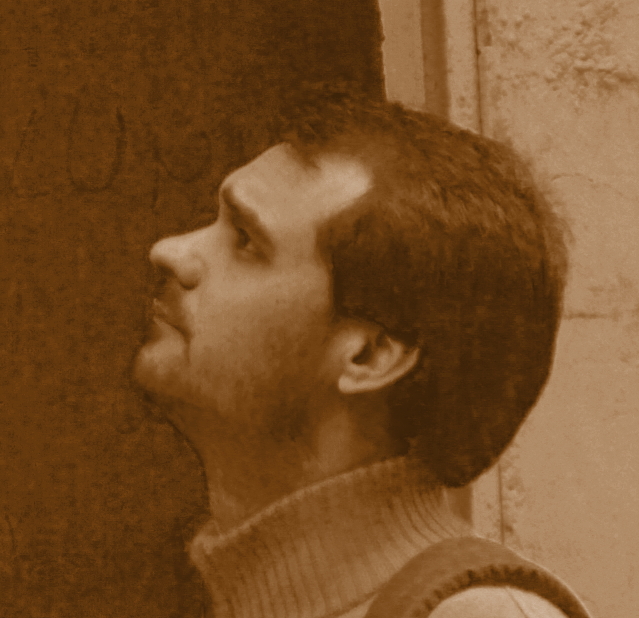An application in musical acoustics:
the case of gongs and cymbals
The typical sound produced by cymbal and gong-like instruments results from the geometrical non-linearity. Controlled experiments, where a cymbal, or a gong, is harmonically forced with a slowly increasing amplitude of forcing, have shown the generic chractaeristics for the transition to chaos via two successive bifurcations. Below is shown an experimental result obtained with a gong.
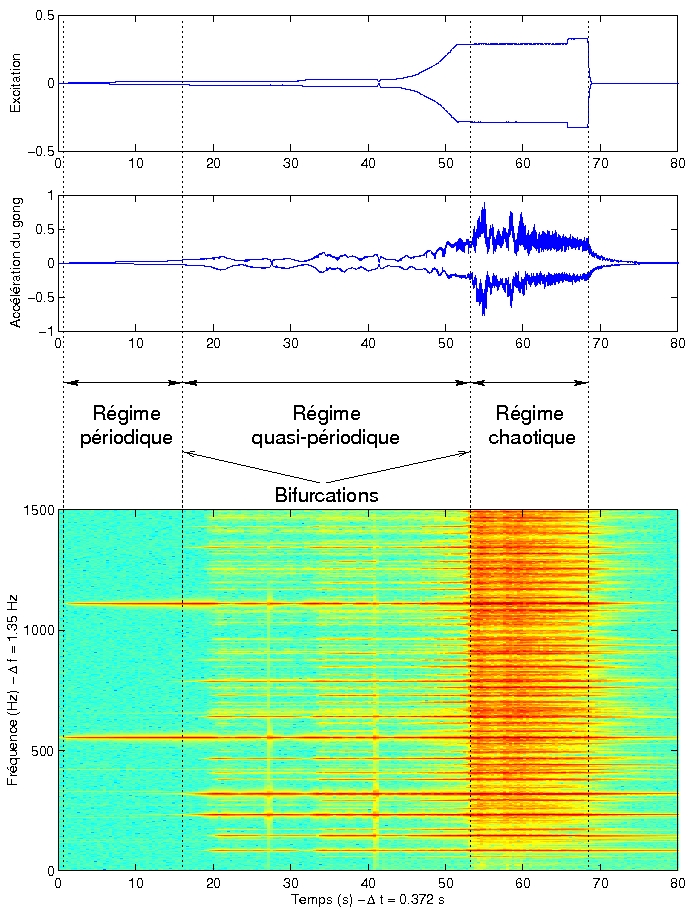 One can hear the sound produced during these kind of experiments, for two different cymbals with two exciting frequencies:
Zyldjian Cymbal, excited at 283 Hz.
[MP3]
One can hear the sound produced during these kind of experiments, for two different cymbals with two exciting frequencies:
Zyldjian Cymbal, excited at 283 Hz.
[MP3]
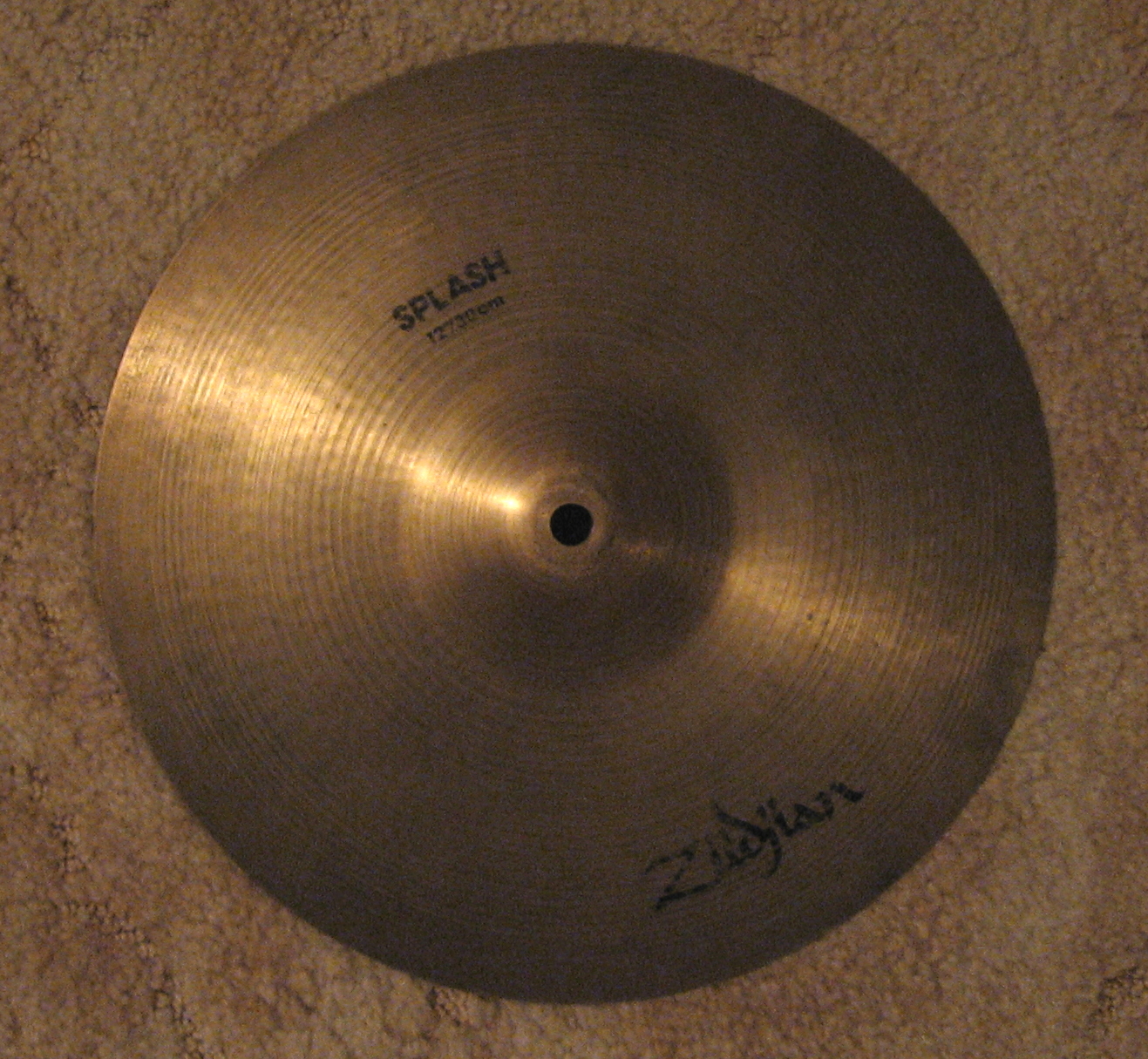 K-ride Cymbal, excited at 438 Hz.
[MP3]
K-ride Cymbal, excited at 438 Hz.
[MP3]
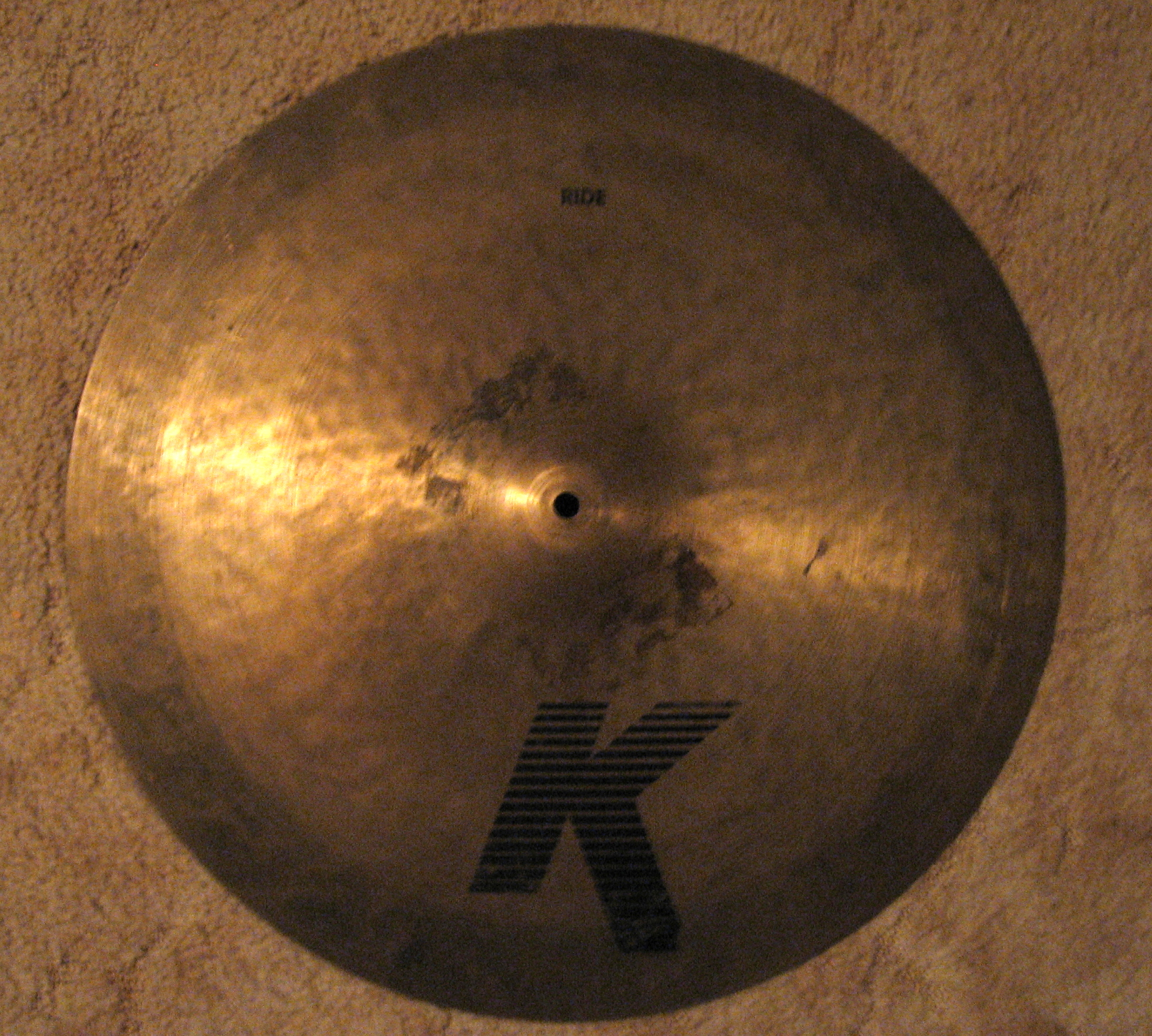
Numerical simulations
Numerical simulations are conducted in order to reproduce the observed experimental scenario as well as to give insight into the wave turbulence regime. Using a numerical procedure developped by Stefan Bilbao, that combines finite difference in space and an energy-conserving scheme in time, we recover the bifurcation scenario with the apparition, for certain excitation frequencies, of the quasiperiodic regime before the chaotic one. below is shown the spectrogram of a numerical simulation for a rectangular perfect plate with free edges, excited at 645 Hz.
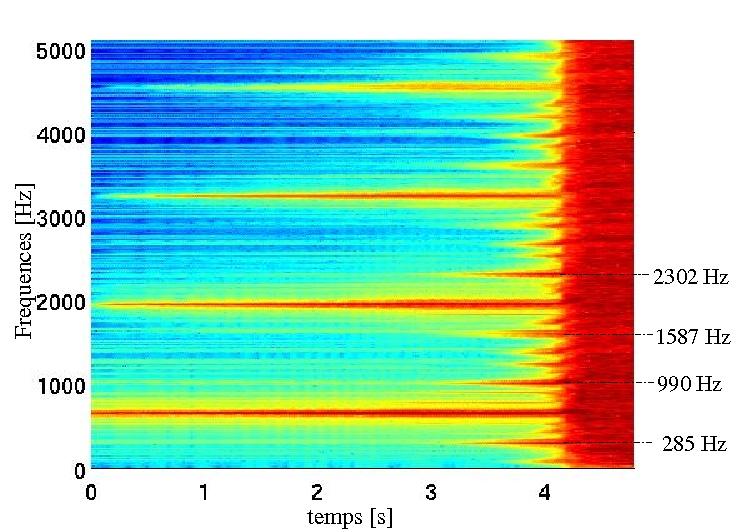 Below at the WAV format, you can hear the sound of a numerical simulation (the velocity of one point), for the same plate but now excited at 289 Hz. (click on the spectrogram to get the sound).
Below at the WAV format, you can hear the sound of a numerical simulation (the velocity of one point), for the same plate but now excited at 289 Hz. (click on the spectrogram to get the sound).
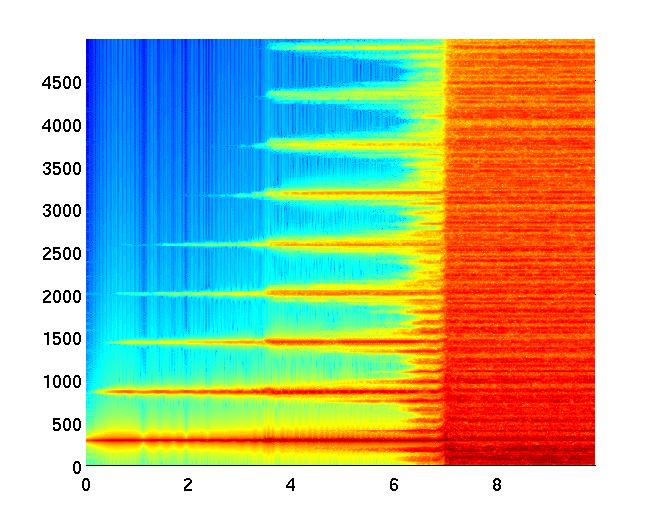
Related articles
- C. Touzé et A. Chaigne : Lyapunov exponents from experimental time series. Application to cymbal vibrations, Acta Acustica, vol 86, No 3, pp. 557-567, 2000.
- A. Chaigne, C. Touzé et O. Thomas: Nonlinear vibrations and chaos in gongs and cymbals, Acoustical Science and Technology, Acoust. Soc. of Japan, vol. 26, No. 5, pp 403-409, 2005.
[AST/ASJ | pdf]
- 28. C. Touzé, S. Bilbao, L. Longo-Mucciante, O. Cadot et A. Boudaoud : Vibrations chaotiques de plaques minces:
application aux instruments de type cymbale, 10ème Congrès Français d'Acoustique (CFA 10), Lyon, 12-16 Avril 2010.
[ pdf ]





